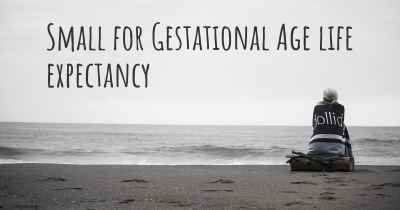What is the history of Small for Gestational Age?
When was Small for Gestational Age discovered? What is the story of this discovery? Was it coincidence or not?

Small for Gestational Age (SGA) refers to a condition in which a baby is smaller than the average size for the number of weeks of pregnancy. This condition is determined by comparing the baby's weight, length, and head circumference to standardized growth charts. SGA babies are often referred to as having intrauterine growth restriction (IUGR) or being small for dates.
The history of SGA dates back to the early 20th century when researchers began studying the relationship between fetal growth and maternal factors. In the 1920s, Dr. James W. Tanner, a British pediatrician, conducted extensive research on fetal growth and developed growth charts to assess the size of babies at different gestational ages. His work laid the foundation for understanding SGA and its implications.
Throughout the mid-20th century, researchers focused on identifying the causes and consequences of SGA. They discovered that maternal factors such as poor nutrition, smoking, drug use, and certain medical conditions could contribute to restricted fetal growth. Additionally, placental abnormalities, genetic factors, and maternal-fetal blood flow issues were found to play a role in SGA.
In the 1970s and 1980s, advancements in ultrasound technology allowed for more accurate assessment of fetal growth and diagnosis of SGA. This led to increased awareness and monitoring of SGA babies during pregnancy. Researchers also began investigating the long-term effects of SGA on child development and health.
One significant milestone in the history of SGA is the establishment of the International Small for Gestational Age Advisory Board (ISGA) in 1998. This board aimed to promote research, education, and awareness about SGA and its impact on health. The ISGA developed guidelines for the management and care of SGA infants, emphasizing the importance of early detection, appropriate interventions, and long-term follow-up.
Over the past few decades, research has further expanded our understanding of SGA. Studies have shown that SGA babies are at increased risk of various health issues, including respiratory problems, hypoglycemia, hypothermia, and developmental delays. They may also have a higher likelihood of developing chronic conditions later in life, such as cardiovascular disease, diabetes, and metabolic disorders.
Today, the management of SGA involves close monitoring during pregnancy, including regular ultrasound scans to assess fetal growth. Healthcare providers may recommend interventions such as nutritional supplementation, increased maternal rest, and close fetal surveillance. In severe cases, early delivery may be necessary to prevent further complications.
Prevention and early detection of SGA are crucial for optimizing outcomes. Prenatal care plays a vital role in identifying risk factors and implementing appropriate interventions. Women are advised to maintain a healthy lifestyle, including a balanced diet, regular exercise, and avoidance of harmful substances.
In conclusion, the history of Small for Gestational Age spans several decades of research and advancements in understanding fetal growth and its implications. From the pioneering work of Dr. James W. Tanner to the establishment of the ISGA, our knowledge of SGA has significantly evolved. Ongoing research continues to shed light on the causes, consequences, and management of SGA, aiming to improve the outcomes for these vulnerable infants.








